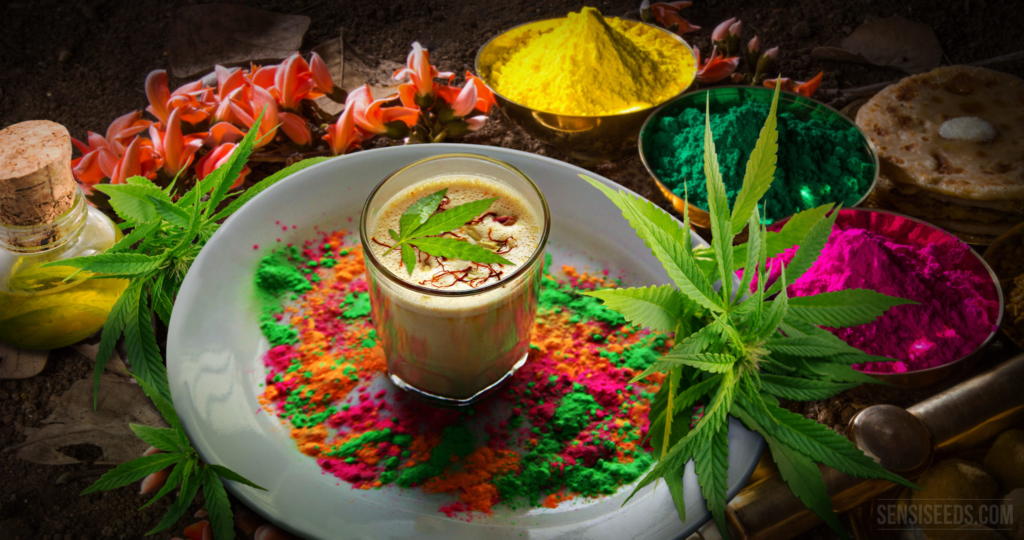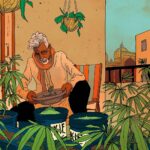India’s relationship with cannabis is ancient, spiritual, and often misunderstood. One of the most intriguing questions people ask today is — “Is bhang just another name for weed?”
While both come from the same cannabis plant, bhang and weed are not the same. This article explores the differences in their preparation, effects, legal status, and cultural significance.
What is Bhang?

Bhang is a preparation made from the leaves and seeds of the cannabis plant. It is usually consumed as a drink, commonly in the form of:
- Bhang lassi
- Bhang thandai
- Occasionally in sweets like gujiya or laddoo
This traditional concoction has been used in India for centuries — especially during religious festivals like Holi and Maha Shivratri.
How is Bhang Different from Weed?

| Feature | Bhang | Weed (Ganja/Marijuana) |
|---|---|---|
| Plant part used | Leaves and seeds | Flowering buds (high in THC) |
| Consumption method | Edible (drink or sweet) | Smoked, vaped, or used as oil |
| Potency | Mild to moderate | Moderate to strong |
| Cultural context | Spiritual and ritualistic | Mostly recreational or medicinal |
| Legal status (India) | Legal in some states | Illegal under NDPS Act |
While both bhang and weed come from the Cannabis Sativa plant, the part of the plant and method of consumption significantly alters the experience and legality.
What Are the Effects of Bhang?
Bhang is known for producing a slow but often strong psychoactive effect. It typically takes 30 minutes to 2 hours to kick in. The effects may include:
Positive Effects:
- Calm and euphoric feelings
- Enhanced sensory perception
- Relief from physical tension
Possible Side Effects:
- Drowsiness
- Nausea (if consumed in excess)
- Paranoia or confusion (in rare cases)
Unlike smoking weed, bhang’s effects are delayed but longer lasting, which often surprises first-time users.
Read More:- पुष्कर में भांग लस्सी पीने का अनुभव Exploring the Bhang Lassi Culture in Pushkar
The Role of Bhang in Indian Culture

Bhang is closely associated with Lord Shiva, who is believed to have consumed cannabis to remain in deep meditation. During Maha Shivratri and Holi, it is considered not just acceptable but spiritually beneficial.
Bhang is also mentioned in Ayurvedic texts for its potential use in:
- Pain relief
- Digestive health
- Anxiety and stress reduction
Its place in Indian culture makes bhang a symbol of devotion, relaxation, and celebration.
Is Bhang Legal in India?
Under Indian law, cannabis (weed/ganja/charas) is banned under the Narcotic Drugs and Psychotropic Substances Act (NDPS), 1985. However, bhang is excluded from this law.
Bhang is legally sold in licensed government shops in several states, including:
- Uttar Pradesh
- Rajasthan
- Odisha
- Bihar (during festivals)
Despite its legality, not all states allow open sale, and unregulated use can still lead to legal consequences.
Conclusion: Is Bhang Really Just Weed?
While bhang and weed both come from the same cannabis plant, they are not the same.
Bhang is milder, culturally rooted, and in many places, legal. Weed is more potent, often smoked, and remains illegal in most parts of India.
Understanding this distinction helps us appreciate India’s unique relationship with cannabis — one that blends spirituality, history, and human curiosity.
Want to Share Your Bhang Story?
Have you tried bhang during Holi or while traveling in India?
We invite you to share your personal experience with our readers.




